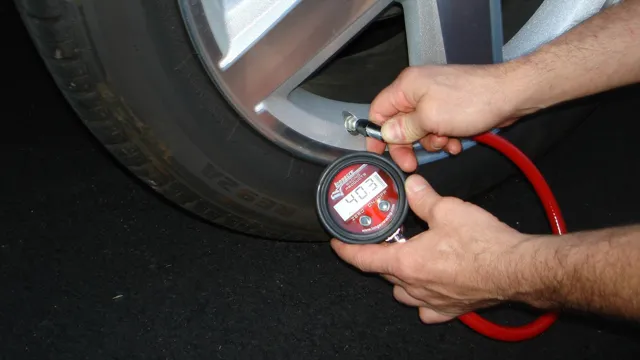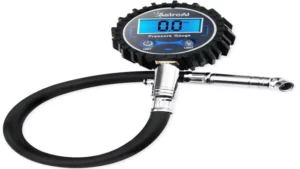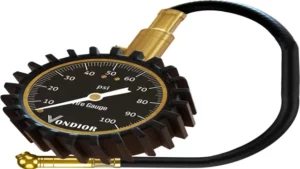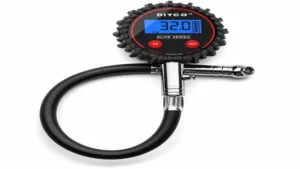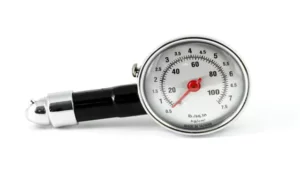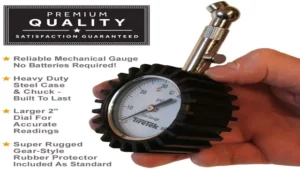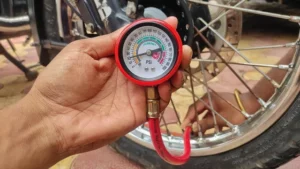Have you ever found yourself in a situation where your tire pressure gauge just won’t work? You try to measure the air in your tire, but the gauge just shows a reading of zero. It can be frustrating when you’re in a hurry and need to know if your tires are properly inflated. So, what are the reasons behind a tire pressure gauge not working? Let’s explore the common causes and how you can troubleshoot the issue.
Common reasons for tire pressure gauge failure
If your tire pressure gauge is not working, there are several common reasons that could be causing the issue. One of the most common reasons is a faulty gauge. Over time, gauges can become damaged or worn out, causing inaccurate readings or a complete failure to operate.
Another possibility is that your tire pressure gauge needs to be calibrated. Just like any other type of measuring device, gauges can lose accuracy over time and need to be recalibrated in order to deliver accurate results. Additionally, if your gauge is old or has been exposed to extreme temperatures, it may be more prone to malfunctioning.
Finally, if you are not using your gauge correctly, it may not deliver the correct reading. Make sure you follow the manufacturer’s instructions carefully and take your time when measuring your tire pressure to ensure accurate results. If you are still having issues with your tire pressure gauge, it may be time to invest in a new one.
Dead battery
Have you ever been in a situation where your tire pressure gauge failed to work when you needed it most? It can be frustrating when you’re checking your tire pressure, and the gauge just won’t budge. There are several common reasons why tire pressure gauges fail, including dead batteries. It’s essential to keep your tire pressure gauge in good working order by changing the batteries regularly.
Another reason for gauge failure is dirt and debris buildup inside the gauge, which can affect its accuracy. It’s crucial to keep your gauge clean and free from dirt, debris, or other obstructions. Over time, your gauge may also become less accurate due to wear and tear, which can impact your ability to measure tire pressure accurately.
It’s always a good idea to invest in a high-quality gauge that has been tested for accuracy and can handle heavy use. Remember, keeping your tire pressure gauge in top working order is essential for ensuring your tires are properly inflated and safe for the road ahead.
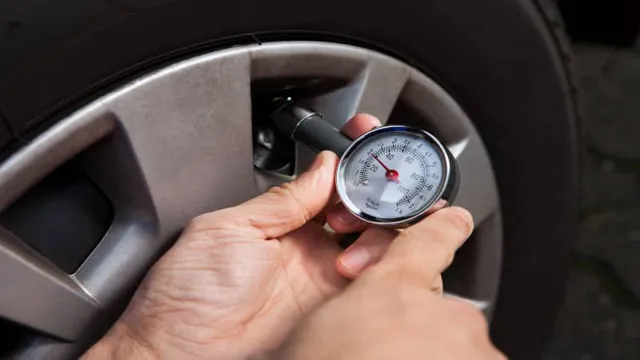
Damaged nozzle or hose
A common reason for tire pressure gauge failure is a damaged nozzle or hose. Over time, these parts can wear down or become cracked, resulting in inaccurate readings and even complete malfunction. If you notice that your tire pressure gauge is not providing consistent results, it may be time to check the nozzle and hose for damage.
Using a damaged gauge can lead to underinflated tires, which can cause unsafe driving conditions and reduce your fuel efficiency. Think of it like a garden hose with a hole in it – even if the water is turned on full blast, the pressure will be reduced at the end where the hole is. The same goes for your tire pressure gauge – if it is damaged, the reading will not accurately reflect the pressure in your tires.
If you do find damage, it’s important to replace the nozzle or hose as soon as possible to ensure safe and accurate tire inflation.
Incorrect usage or calibration
One of the most common reasons for tire pressure gauge failure is incorrect usage or calibration. Many people don’t realize that tire pressure gauges need to be properly calibrated in order to provide accurate readings. If a gauge is not calibrated correctly, it can lead to reading errors and inaccurate inflation levels.
Additionally, if a gauge is not used properly, such as not being inserted into the tire valve correctly, it can lead to false readings as well. It’s important to understand how to use a tire pressure gauge correctly and to calibrate it regularly to avoid issues. By doing so, you can ensure that your tires are properly inflated, which can improve fuel efficiency, handling, and overall safety on the road.
Steps to troubleshoot and fix tire pressure gauge
If you’re wondering why your tire pressure gauge isn’t working, don’t fret! There are several steps you can take to troubleshoot and fix the issue. First, make sure the gauge is properly calibrated by comparing it to a known accurate gauge. If it’s not reading correctly, try adjusting the calibration screw.
If that doesn’t work, check the gauge for any damage or debris that may be blocking the air pressure intake. Another possible issue could be a faulty valve stem or missing valve cap, which can allow air to leak out and cause inaccurate readings. And of course, make sure the tires are properly inflated to begin with! By following these steps and taking care of your gauge, you’ll be able to get back to ensuring your tires are always at the optimal pressure for safe and efficient driving.
Inspect the gauge for damage or low battery
When it comes to troubleshooting and fixing your tire pressure gauge, one of the first steps is to inspect the gauge for any signs of damage or low battery. This is an important aspect of ensuring the accuracy of your readings. First, check the gauge display to ensure that it’s still functioning properly.
If the display is dim or not showing any numbers, it’s likely that your battery needs to be replaced. Another common problem is physical damage to the gauge, such as cracks or dents that can affect its precision. If you notice any of these issues, it’s best to replace the gauge entirely.
A damaged or low battery tire pressure gauge can lead to inaccurate readings that can affect your vehicle’s safety and performance. By taking the time to troubleshoot and fix any issues with your gauge, you can rest assured that you’re getting reliable and accurate readings every time.
Check the nozzle or hose for any clogs or damage
When it comes to troubleshooting and fixing tire pressure gauges, one of the most common issues is a clogged or damaged nozzle or hose. This can prevent proper air flow and lead to inaccurate readings. Thankfully, fixing this problem is usually pretty simple.
Start by checking the nozzle or hose for any visible signs of damage, such as cracks or holes. If you can’t see anything, try blowing air through the nozzle or hose to see if you feel any resistance. If there is resistance, you may have a blockage that needs to be cleared.
You can try using a fine wire or pipe cleaner to gently dislodge any debris. If the problem persists, it may be time to replace the nozzle or hose altogether. Just remember, keeping your tire pressure gauge in good working order is essential for maintaining safe and efficient driving, so don’t hesitate to address any issues as soon as they arise.
Follow the instruction manual to correct usage and calibration
Tire pressure gauges are essential tools that help maintain your car’s tires. However, sometimes they may not provide accurate readings, and they may stop working altogether. To troubleshoot and fix your tire pressure gauge, the first step is to check the instruction manual.
The manual will usually provide a step-by-step guide on how to use and calibrate the gauge correctly. It’s important to follow these instructions carefully to avoid any further damage to the gauge. If this does not work, the next step is to check if the battery needs replacing or if there are any leaks in the gauge.
Additionally, ensure that you’re using the right fitting for the valve stem. Lastly, if all else fails, consider taking the gauge to a professional mechanic to diagnose and fix any underlying issues. By following these steps, you can usually troubleshoot and fix any problems with your tire pressure gauge, ensuring that your car’s tires are in good shape.
Don’t neglect your tire pressure gauge – keep it working correctly for safe driving!
Tips to avoid tire pressure gauge failure
Are you wondering why your tire pressure gauge is not working? It can be frustrating when you are trying to check your tire pressure, and the gauge doesn’t show any reading. One reason for this could be a faulty gauge. It’s always a good idea to invest in a quality gauge to avoid this problem.
Another reason could be that the gauge is not securely connected to the valve stem. Make sure that the gauge is tight and flush against the stem before taking a reading. Additionally, extreme temperatures can also affect the accuracy of your tire pressure gauge.
If you’re using the gauge in very hot or cold temperatures, let it acclimate to the environment before taking a reading. By following these tips, you can avoid tire pressure gauge failure and ensure your tires are always properly inflated, which is essential for your safety on the road.
Store the gauge in a safe and dry place
One of the most important tools that every vehicle owner should have in their toolkit is a tire pressure gauge. But just having a gauge isn’t enough; it’s important to make sure that it’s working properly and accurately. One way to ensure this is to store the gauge in a safe and dry place.
Moisture can damage the gauge and interfere with the accuracy of the readings, so keep it away from humid environments. Another tip to avoid gauge failure is to check the gauge before every use to make sure it’s clean and not damaged. If you notice any wear and tear or damage, it’s best to replace it immediately to prevent any inaccurate readings.
Finally, when using the gauge, make sure to follow the manufacturer’s instructions carefully. Don’t apply excessive force or twist the gauge when it’s in use as this can also damage the gauge. By following these simple tips, you’ll be able to ensure that your tire pressure gauge lasts longer and provides accurate readings every time.
Calibrate the gauge after every use
Tire pressure gauges are essential tools for vehicle owners who want to maintain their tires’ optimal performance. However, the gauge’s failure to provide accurate readings can result in over or under-inflated tires, leading to accidents and decreased fuel efficiency. With that in mind, it is crucial to calibrate the gauge after every use to ensure the readings are correct.
Some other tips to avoid tire pressure gauge failure include using a gauge with a trusted brand, storing it in a dry and clean place, and avoiding dropping or damaging it. It’s also essential to check the gauge’s accuracy regularly by testing it against a calibrated master gauge. Taking care of your tire pressure gauge will extend its lifespan and keep your vehicle tires in excellent condition.
Handle the gauge with care to prevent damages
When it comes to checking your car’s tire pressure, a tire pressure gauge is an essential tool. However, it’s important to handle the gauge with care to prevent damages that could lead to failure. One of the first tips to avoid tire pressure gauge failure is to keep it clean and dry.
Moisture can damage the gauge’s internal components, so avoid exposing it to rain or water. Additionally, don’t drop or throw the gauge, as it can damage the fragile components inside. When storing the gauge, make sure to protect it from heat and cold, which can also damage the delicate parts inside.
Finally, be sure to follow the manufacturer’s instructions for calibrating and maintaining your gauge to ensure accurate readings. By following these tips, you’ll be able to avoid tire pressure gauge failure and keep your car’s tires properly inflated for the best performance and safety on the road.
Conclusion
Well, it seems like your tire pressure gauge is trying to tell you something, maybe it’s time for a new one. Or perhaps it’s just a stubborn gauge that needs a little encouragement, like a good shake or a few gentle taps. Either way, don’t let a faulty gauge deflate your mood – just keep your tires properly inflated and you’ll be rolling with confidence on the road!”
FAQs
How do I check if my tire pressure gauge is accurate?
To check if your tire pressure gauge is accurate, you can compare its readings with those of a professional gauge or with the recommended pressure levels listed in your vehicle’s owner’s manual.
Can a low battery cause my tire pressure gauge to give inaccurate readings?
Yes, a low battery can cause your tire pressure gauge to give inaccurate readings. It is recommended to replace the battery regularly to ensure accuracy.
What should I do if my tire pressure gauge is not reading any pressure?
If your tire pressure gauge is not reading any pressure, you may need to replace the gauge or check the valve stem for any debris or damage.
Can extreme temperatures affect my tire pressure gauge’s accuracy?
Yes, extremely high or low temperatures may affect your tire pressure gauge’s accuracy. It is important to store and use the gauge in the recommended temperature range.
Why is it important to have an accurate tire pressure gauge?
An accurate tire pressure gauge is important for maintaining proper tire pressure, which can help improve fuel efficiency, tire wear, and overall vehicle performance.
How often should I calibrate my tire pressure gauge?
It is recommended to calibrate your tire pressure gauge at least once a year or whenever you suspect it may be giving inaccurate readings.
Can a damaged tire pressure gauge be repaired?
It depends on the extent of the damage. In some cases, a damaged tire pressure gauge can be repaired, but it is often more cost-effective to replace it instead.
